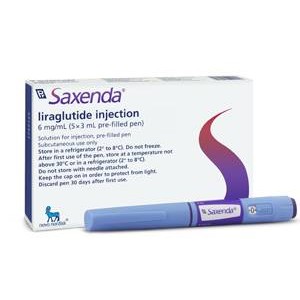How to Get Saxenda For Free
The following ways can provide Saxenda for free or at a discounted price in the United Kingdom (UK).
NHS prescription
National Health Services (NHS) offers Saxenda free of cost to those who are eligible and exempt from paying any price for their prescription medications.
To get it free or at a discounted rate, you need to get a Saxenda prescription from tier 3 weight management services. These services have specialists with extensive knowledge and experience in weight management. (Usually, a GP refers you to these services if you meet the eligibility criteria.)
Patient Assistance Programs
Novo Nordisk (manufacturer of Saxenda) offers “Patient Assistance Programs” that provide financial assistance to patients with affordability issues who meet the eligibility criteria.
Government Assistance Programs
Government-run programs like prescription prepayment certificates (PPCs) offer prescription medications at a cheaper price.
Similarly, the NHS Low Income Scheme can help you pay for NHS prescriptions if you do not have capital or savings over £6,000 and are either a pensioner or student, are earning a wage, are living in a care home, or are receiving state benefits.
You can contact your local adult social care services to know if you are eligible for government-run assistance programs for NHS prescription medications like Saxenda.
What is its price in private? Are there any discounts?
As reported by NICE guidelines, the list price of Saxenda is £196.20 per 18mg (3ml) pre-filled pen.
If you are willing to pay this price and your private prescriber considers Saxenda safe and suitable for you, you can get it with a private prescription. However, the company offers a discounted price if purchased through a secondary-care tier 3 weight management service.
Saxenda Weight Loss Pen
- Suppresses appetite
- Taken once daily
- Effective weight loss aid
What is Saxenda?
Saxenda is a prescription medicine used for weight management in obese and non-diabetic adults (BMI ≥35 or at least ≥32.5 for members of minority ethnic groups) with high blood sugar levels (HbA1c 6% to 6.4%) and cardiovascular risk factors like hypertension and dyslipidemia.
In the United Kingdom, it is approved as an adjunct weight management option alongside a low-calorie diet and physical activity.
How does it work?
Saxenda's active ingredient is “Liraglutide,” which is a glucagon-like peptide (GLP-1) receptor agonist. GLP-1 receptors are present in some regions of the brain that control hunger and food intake. GLP-1 agonists like Saxenda bind to those receptors, reducing appetite and, hence, food intake.
Moreover, following a low-calorie diet when using Saxenda is easier because it helps control appetite and increases satiety. However, for better results, it should be used in combination with regular exercise and diet control.
Benefits of Saxenda in weight management
Saxenda (Liraglutide) is associated with a significant reduction in mean body weight. One key feature of weight loss with Liraglutide is it remains maintained over an extended period. Thus, it provides induction and maintenance of weight loss.
In addition to mean body weight, Liraglutide reduces cardiometabolic risk factors like blood pressure, waist circumference, and fasting lipid levels. Furthermore, it decreases fasting and postmeal blood sugar levels, offering better glycemic control (blood sugar control).
Side effects of Saxenda
The most common side effects of Saxenda include nausea, vomiting, diarrhoea, injection site reaction, stomach pain, fatigue, and low blood sugar.
Though rarely, it may also cause some severe side effects, including pancreatitis (inflammation of the pancreas), gallstones, kidney failure, and life-threatening allergic reactions. Moreover, you should also keep a check on your mental well-being because it can cause mood swings, depression, and suicidal thoughts.
Who should not use Saxenda?
Saxenda should not be used in the following cases.
- If you or your family member have ever been diagnosed with Multiple Endocrine Neoplasia syndrome.
- If you have experienced a severe allergic reaction to Saxenda.
- If you are pregnant or plan to become pregnant.
Moreover, Saxenda should be used with caution (after discussing it with a healthcare professional) if you have severe stomach problems, depression, mental health issues, or problems with your kidney, pancreas, or liver.
You should also consult with your healthcare professional before using Saxenda if you are lactating or plan to lactate.
Can it be used with other weight loss medications?
It is better to avoid taking Saxenda when using other weight loss prescription medicines, over-the-counter medicines, or herbal products because its safety and efficacy are not known in such cases.
Is it safe for children?
The safety and effectiveness of Saxenda in diabetic children aged 12 to 17 is yet unknown. So, it would be better to avoid using it in children with type 2 diabetes.
Sources
National Health Service (NHS). Prescription Prepayment Certificate (PPC)
National Health Service (NHS). NHS Low Income scheme
NICE Guidelines 2020. Liraglutide for managing overweight and obesity
The Lancet 2024. Healthy weight loss maintenance with exercise
The New England Journal of Medicine 2015. A Randomized, Controlled Trial of 3.0 mg of Liraglutide in Weight Management
Authored & Reviewed By

Dr Giuseppe Aragona
DoctorPublished on: 04/01/2023 Reviewed on: 13/04/2023
© 2013 - 2025 Al Muhsineen Limited. All Rights Reserved. Registered Pharmacy: 34 Halliwell Road, Bolton BL1 8RL. Registered Office: 254 First Floor, Shearbrow, Blackburn, England, BB1 8DS






